The veterinary profession has a very diverse clientele. This diversity poses a challenge, of equity and inclusiveness in veterinary practice. Diversity, Equity & Inclusiveness (DEI) practices help to provide care tailored to meet the unique needs of diverse populations, including under-served communities. In this blog, Devesh Thakur explores the importance of DEI practises in the provision of first-class animal care by veterinary professionals.
CONTEXT
Diversity, equity, and inclusiveness have gained worldwide prominence across all sectors. The Google search of the words ‘diversity’, ‘equity’, and ‘inclusion/inclusiveness’ has increased by 700 percent since 2020 (Source: Google Trends 2023). The top universities of the world – such as Harvard Medical School, Yale, and Stanford School of Medicine – are embracing the measures of diversity, equity and inclusiveness in their institutions. Multinational Corporations (Facebook/Amazon/Microsoft, etc.) have embraced Diversity, Equity, and Inclusiveness/Inclusion (DEI) measures. The Indian corporate sector has published a manual on DEI practices in the workplace (Assocham 2022). Sports bodies around the world (Sports Ireland, England Cricket Board, Cricket Australia) also have equity, diversion, and inclusion policies in place. As in all other sectors veterinary institutions in the USA and Europe have embraced DEI. Some of the noteworthy ones are the America Association of Veterinary Medical Colleges, the Royal College of Veterinary Surgeons, the British Veterinary Association, and several other vet schools in the US and UK. With these developments, it becomes essential to understand the concept of Diversity, Equity & Inclusiveness in the Veterinary Profession.
Diversity, equity and inclusiveness are three interconnected terms. It is only in combination that their true impact will emerge (McKinsey 2022). Despite the renewed energy around DEI, there remains a noticeable lack of clarity around each of these terms (What Diversity, Equity, and Inclusion Really Mean ideal.com). Therefore, it’s important to understand these terms first before recognising their relevance in the veterinary profession (Box 1).
|
Box 1: Definitions: Diversity, Equity and Inclusion Diversity: Recognizing and celebrating differences in people, including various characteristics that distinguish individuals from one another (University of California – Berkeley 2015; McKinsey 2022). Equity: Ensuring fair treatment for all individuals, including the identification and elimination of systemic and structural barriers that prevent participation in the workforce (University of California – Berkeley 2015; McKinsey 2022; Hirasuna et al. 2023). Inclusion: Creating an environment where everyone feels welcome and valued, including providing access to resources, involvement in work groups, and the ability to influence organization-wide decisions (University of California – Berkeley 2015; Hirasuna et al. 2023; McKinsey 2022). Together, Diversity, Equity, and Inclusion promote a workplace culture that values and respects differences, ensures fairness, and enables everyone to make meaningful contributions. “Diversity is having a seat at the table, inclusion is having a voice, and belonging is having that voice be heard.” (Liz Fosslien) |
WHY DO DIVERSITY, EQUITY & INCLUSIVENESS MATTER IN THE VETERINARY PROFESSION?
Diversity, Equity, and Inclusiveness have gained prominence in the veterinary profession. The goal is to provide educational experiences about varied forms of livestock production to students from diverse backgrounds who are interested in becoming veterinarians (Cannedy 2016). Increased diversity improves access to healthcare in the regions where serious forms of socio-economic, regional and other disparities exist. It can lead to accelerated advances in veterinary medical research as greater diversity in backgrounds and experiences of researchers shape their critical thinking. Diversity also encourages active thinking. There are three important reasons why DEI practices are important for those in the veterinary profession. These are:
Implementing DEI practices can help to overcome errors in decision-making by veterinarians while performing their jobs
The literature review suggests that this concept has origins primarily in the USA and UK. The veterinary profession is among the least diverse professions in the US (American Association of Veterinary Medical Colleges). Further, like other human beings, veterinarians can have unconscious biases. Groupthink, unconscious biases, and cultural incompetence are common problems among vets (Khuly 2020). These cognitive biases routinely impact the decisions of veterinarians. Furthermore, these biases create barriers and disparities in animal care based on the background of ownership. By implementing DEI practices veterinary professionals can mitigate the impact of these biases and ensure that every animal and its owner receive equitable and fair treatment.
Implementing DEI practices can overcome disparities in animal care arising from owners’ background
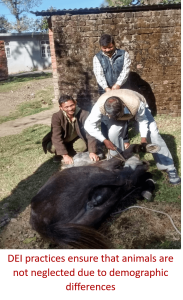 Research suggests that low-income clients face barriers when seeking clinical/advisory services from vets. Inaccessibility, poor communication, lack of empathy, and cultural incompetence are some of these barriers. For example, people with disabilities, women, and the poorest of the poor livestock owners have limited access to competent veterinary care. The clientele in the veterinary profession is very diverse.
Research suggests that low-income clients face barriers when seeking clinical/advisory services from vets. Inaccessibility, poor communication, lack of empathy, and cultural incompetence are some of these barriers. For example, people with disabilities, women, and the poorest of the poor livestock owners have limited access to competent veterinary care. The clientele in the veterinary profession is very diverse.
Clientele ranges from urban affluent women pet owners to aged single women undertaking backyard poultry enterprises. Similarly, when it comes to animal care the needs range from those of educated youth engaged in commercial livestock farming to migratory pastoralists. Limited veterinary diversity creates challenges in the provision of access to veterinary care in areas with socio-economic and other demographic diversities. This gap is normally filled by para-veterinary staff which results in compromised quality of service. Thus, the veterinary sector needs diversity in terms of professionals so that the profession’s ability to provide quality care is enhanced. DEI practices in veterinary medicine would enable the sector to better serve a diverse population (Burkhard et al. 2022). A diverse population of veterinarians will see the same problem in different ways, broadening the approach to solutions, and promoting innovation (Packer 2021). Moreover, a varied and diverse range of knowledge and experience in the veterinary profession is better suited for the development of new services and processes to meet diverse demographic needs (RCVS 2019).
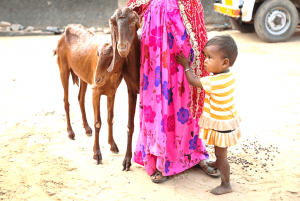 Women, and the poorest of the poor livestock owners have limited access to competent veterinary care
Women, and the poorest of the poor livestock owners have limited access to competent veterinary care
(Source: https://www.globalgiving.org/projects/veterinary-care-for-animals-of-indias-rural-poor/)
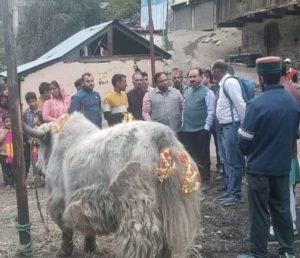 Meeting diverse client needs is important. Here we see the yak rearing community inspecting the needs of a breedable male yak in Kugti, Bharmour, Himachal Pradesh.
Meeting diverse client needs is important. Here we see the yak rearing community inspecting the needs of a breedable male yak in Kugti, Bharmour, Himachal Pradesh.
Implementing DEI practices can reduce job stress and improve a sense of belonging in the workspace and profession
Lack of diversity, equity, and inclusiveness (DEI) in the veterinary profession has been identified as one of the factors for increased stress among veterinarians across demographics (British Veterinary Association 2019). Student discrimination is a serious issue attributable to ethnic diversity at most veterinary universities (Robinson et al. 2019).
Members of the Lesbian, Gay, Bisexual, Trans, Queer, and Intersex (LGBTQI+) community experience more mental health problems and suicidal ideation in veterinary school and as veterinary professionals (Witte et al. 2020). Globally the number of female veterinarians is increasing and this number has outpaced male veterinarians in many countries and regions, for instance 58% of all European veterinarians are female (FVE VETSurvey 2018).
Yet client sexism (clients often demanding a male vet or insisting on a second opinion from ‘one of the boys’.) is common. There is a lack of respect for female practitioners, especially following childbirth and/or working part-time (FVE VETSurvey 2018). The gender pay gap is also reported in veterinary practice (Kersebohm et al. 2017). All factors call for the promotion of DEI practices to minimize stress among veterinarians.
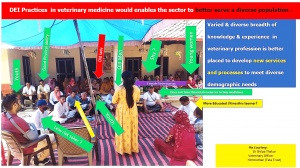 DEI practices enable better understanding of various diversities – age, gender, and socio-economic background – of livestock clientele
DEI practices enable better understanding of various diversities – age, gender, and socio-economic background – of livestock clientele
MEASURES TO PROMOTE DIVERSITY, EQUITY AND INCLUSIVENESS/INCLUSION IN THE VETERINARY PROFESSION
DEI practices in the veterinary profession have to be understood from various angles. Ensuring DEI at workplaces, such as veterinary educational and service institutions, will ensure fair treatment of all people. This will minimise biases, prejudices and stereotypes. Workplace aggression and conflicts would be reduced; and an improved sense of belonging will enhance workplace productivity and enrich client service delivery.
 Migratory pastoralists often have poor access to proper veterinary care
Migratory pastoralists often have poor access to proper veterinary care
In terms of service delivery, DEI practices can ensure that every animal and its owner receive equitable and fair treatment. Veterinarians are humans and therefore can have unconscious biases affecting decisions leading to disparities in animal care. Improved bias awareness through an understanding of diversity, equity and inclusiveness would help them mitigate the impact of these biases on their clinical/advisory decisions.
Box 2 throws some light on measures to promote DEI (Burkhard et al. 2022). For more read his article.
| Box 2: Measures to promote DEI
I. Build a pipeline for diversity
II. Create an inclusive campus environment
III. Redesign curricula for DEI
IV. Provide opportunities for diverse learning
V. Other measures
|
 Lecture on awareness about DEI Practices, organised by Veterinary and Animal Science Teachers Association, DGCN COVAS, Palampur, on World Veterinary Day, 2023.
Lecture on awareness about DEI Practices, organised by Veterinary and Animal Science Teachers Association, DGCN COVAS, Palampur, on World Veterinary Day, 2023.
EFFORTS BY VETERINARIANS OF HIMACHAL PRADESH ON THE SUBJECT OF DIVERSITY, EQUITY & INCLUSIVENESS IN THE VETERINARY PROFESSION
Though awareness about DEI practices may be minimal among veterinarians, yet some of the veterinarians ensure that clinical and advisory services are inclusive. This means that based on nature of ownership, animals are not neglected. DGCN College of Veterinary and Animal Sciences celebrated World Veterinary Day 2023 with a lecture on Diversity, Equity and Inclusiveness. It was organised by Veterinary and Animal Science Teachers Association (VASTA), Dr GC Negi College of Veterinary & Animal Sciences, Palampur. Some of the examples where ethnicity, difficult locations, and socio-economic background do not create barriers and disparities in animal care are mentioned below.
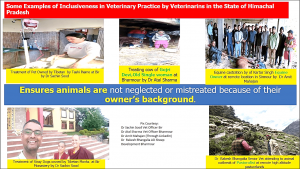 Some noteworthy instances showing diversity, equity and inclusiveness in veterinary practice
Some noteworthy instances showing diversity, equity and inclusiveness in veterinary practice
The American Veterinary Medical Association (AVMA) and the Royal College of Veterinary Surgeons (RCVS) have taken various steps to improve diversity, equity, and inclusion (DEI) in the veterinary profession. Some of the common steps taken by both organizations are given in Box 3 along with Cannedy’s (2016) steps to promote diversity in veterinary practice.
| Box 3: Steps to improve DEI in the veterinary profession and veterinary practice
a) Veterinary Profession (AVMA and RCVS)
These steps are critical to creating a more diverse, equitable, and inclusive veterinary profession, which will benefit all – animals, pet owners, and the broader society. b) Veterinary Practice (Cannedy 2016)
|
 DEI in veterinary practice calls for acknowledging the client’s background and acceptance. Here, a Tibetan pet owner receives treatment at Veterinary Hospital, Bir, Himachal Pradesh, India.
DEI in veterinary practice calls for acknowledging the client’s background and acceptance. Here, a Tibetan pet owner receives treatment at Veterinary Hospital, Bir, Himachal Pradesh, India.
CONCLUSION
The awareness of diversity, equity and inclusion practices is generally low in the veterinary profession. However, the thriving and modern veterinary profession needs increased openness and acceptance of DEI measures. Experiences of various businesses across the globe suggest that DEI practices bring more innovation, a sense of belonging, and improved productivity. Implementing DEI practices will ensure inclusion in veterinary institutions. Further, DEI practices would ensure animals are not neglected based on ownership background. Various veterinary institutions and professional veterinary associations in the developed world are encouraging/adopting DEI practices.
It’s time for DEI to become a part of the Veterinary Profession in India.
As Dr Niall Connel, Royal College of Veterinary Surgeons, Senior Vice President and Chair of the Diversity and Inclusion Group, observes, If we are losing colleagues to discrimination or just not attracting people from diverse backgrounds in the first place because they think it’s ‘not for people like them’, then we are losing out as a profession, and if we aren’t drawing on a diverse range of backgrounds, experiences, and attitudes in our work, then we are also potentially doing a disservice to our patients and clients. This is why this strategy is not just a case of being seen to be doing something, but is actually crucial for the ongoing vitality and credibility of the veterinary team.
REFERENCES
ASSOCHAM. 2022. A publication on diversity and inclusion practices at workplace. Associated Chambers of Commerce and Industry of India (ASSOCHAM).
AVMA. 2022. American Veterinary Medical Association. www.avma.org/resources-tools/diversity-and-inclusion-veterinary-medicine/commission-diverse-equitable-and-inclusive-veterinary-profession
British Veterinary Association. 2019. BVA report on ‘Discrimination in the Veterinary Profession’ 2019. Available online at: https://www.bva.co.uk/media/2991/bva-report-on-discrimination-in-the-veterinary-profession.pdf
Burkhard MJ, Dawkins S, Knoblaugh SE, El-Khoury C, Coble D, Malbrue RA, … and Moore RM. 2022. Supporting diversity, equity, inclusion, and belonging to strengthen and position the veterinary profession for service, sustainability, excellence, and impact. Journal of the American Veterinary Medical Association 260(11):1283-1290.
Cannedy Allen. 2016. The benefits of diversity in veterinary private practice. Illinois State Veterinary Medical Association https://www.isvma.org/wp-content/uploads/2016/10/BenefitsofDiversity.pdf.
Federation of Veterinarians of Europe (FVE). 2018. FVEVET-European Veterinary Survey 2018 – Future veterinarians: younger and female , Federation of Veterinarians of Europe.
Hirasuna D, Thilmany D, Muhammad A, Fields D and Stefanou S. 2023. Perspectives on diversity, equity, and inclusion in the agricultural and applied economics profession. Applied Economics Teaching Resources (AETR) 5(2), TBD-TBD.
Kersebohm JC, Lorenz T, Becher A and Doherr MG. 2017. Factors related to work and life satisfaction of veterinary practitioners in Germany. Veterinary Record Open 4(1):e000229.
Khuly P. 2020. Diversity in veterinary medicine: No longer the whitest, but still the biggest loser.Veterinary Practice News, September, 2020 Diversity in veterinary medicine: No longer the whitest, but still the biggest loser – Veterinary Practice News
McKinsey. 2022. What is diversity, equity, and inclusion. Report, August 2022.
Packer RA. 2021. Overcoming the hurdles: Promoting diversity within veterinary medicine. https://www.dvm360.com/view/overcoming-the-hurdles-promoting-diversity-within-veterinary-medicine
Purdue University. 2023. Meets Vet Up! The National HCOP Academy for Veterinary Medicine Program Eligibility Requirements https://vet.purdue.edu/diversity/vetup/.
RCVS. 2021. Diversity and inclusion group strategy, A Report. UK: Royal College of Veterinary Surgeons.
RCVS. 2019. Diversity and inclusion in the veterinary professions. UK: Royal College of Veterinary Surgeons. https://www.rcvs.org.uk/news-and-views/blog/diversity-and-inclusion-in-the-veterinary-professions/
Robinson D, Edwards M, Mason B, Cockett J, Arnill Graham K. and Martin A. 2019. RCVS 2019 survey of the veterinary profession. UK: RCVS. https://www.rcvs.org.uk/news-and-views/publications/the-2019-survey-of-the-veterinary-profession
University of California – Berkeley. 2015. Strategic planning for equity, inclusion & diversity. https://diversity.berkeley.edu/sites/default/files/academic-strategic-toolkit-final.pdf
Witte TK, Kramper S, Carmichael KP, Chaddock M and Gorczyca K. 2020. A survey of negative mental health outcomes, workplace and school climate, and identity disclosure for lesbian, gay, bisexual, transgender, queer, questioning, and asexual veterinary professionals and students in the United States and United Kingdom. Journal of the American Veterinary Medical Association 257(4):417-431. doi: 10.2460/javma.257.4.417. PMID: 32715886.
ACKNOWLEDGEMENTS: The author thanks Dr Sachin Sood, Dr Atal Sharma, Dr Shilpa Thakur, Dr Amit Mahajan and Dr Madhur Gupta, veterinary officers of the State Department of Animal Husbandry, Himachal Pradesh, for extending support by providing photos for this blog.
 Dr Devesh Thakur is Assistant Professor at the Department of Veterinary & Animal Husbandry Extension Education, Dr GC Negi College of Veterinary & Animal Sciences, Palampur, India. (Email drdth4@gmail.com)
Dr Devesh Thakur is Assistant Professor at the Department of Veterinary & Animal Husbandry Extension Education, Dr GC Negi College of Veterinary & Animal Sciences, Palampur, India. (Email drdth4@gmail.com)

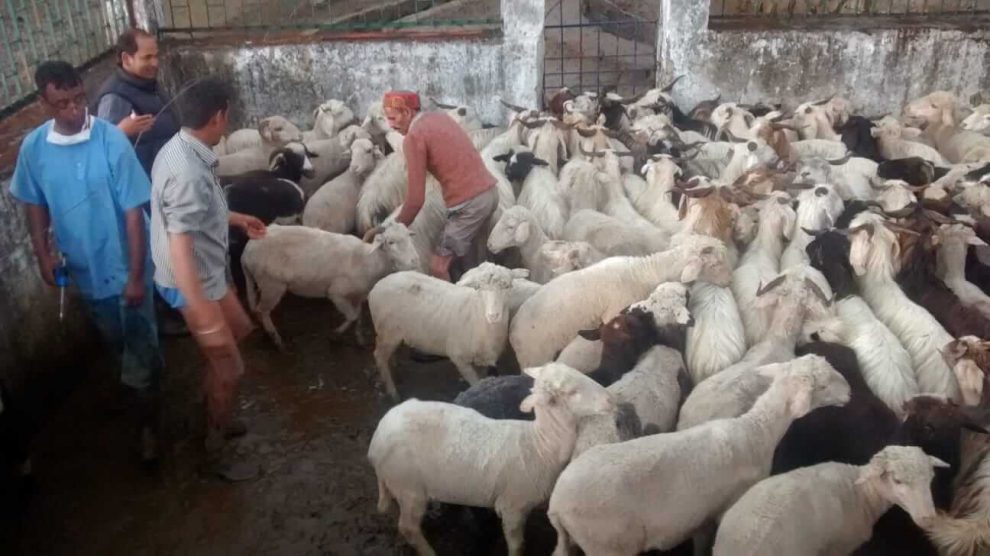



The value of a veterinarian lies in the value of the animal he or she treats. This is the main reason for the conscious bias the veterinarian shows towards rich and affluent owners of the patients. Similarly, there exists a bias in terms of the species of the animal. The Vets usually focus or give importance for large ruminants, small ruminants, pigs and backyard poultry in that order as far as service delivery is concerned. Although, it is against the ethics of veterinary profession, these biases exist in the globe. But as the author points out it is time for the DEI to become a part of the Veterinary Profession in India. This should start from the Teaching Veterinary Hospitals which are equally prone for all sorts of biases which the author has indicated. These values must be inculcated among the budding veterinarians by the teachers who must be the role models for them. The earlier our vets realize “Together, Diversity, Equity, and Inclusion promote a workplace culture that values and respects differences, ensures fairness, and enables everyone to make meaningful contributions” the better it is.
Congratulations to Dr. Devesh Thakur for coming out with a thought provoking blog. Thanks to AESA for making it accessible to us.